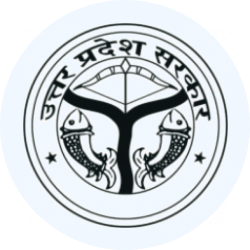Proper Manpower Planning : A Must For Development - Essay, UPSC MAINS | Course for UPPSC Preparation - UPPSC (UP) PDF Download
Proper Manpower Planning : A Must For Development
structure
(1) Opening — Development is a recurring theme and a common idiom in the vocabulary.
(2) Body — The change with a pre-determined direction.
— Pre-independence, in- dependence and planning.
— Human resources is an asset.
— Population problem.
— Investment in human capital.
— The eighth & ninth plan.
— Diversification of secondary and tartiary activities.
(3) Closing — Development is a multifarous phenomenon.
The third world countries are exposed to the process of change operating at the national and local level simultaneously, extending and expending both geographically and socially, affecting both the form and functions of groups and organisations, and evolving new patterns of living and thinking. The ruling elites of these countries are influenced by the liberal or revolutionary philosophies of the West either of their earlier colonial masters or of their allies in their battle against Imperialism. They have been equally impressed by the industrial strength of the West supporting its production machine. Leadership of the third world countries is therefore endeavouring in every way to introduce change on this pattern and to strengthen its process- the process of development. For its leadership development therefore is a recurring theme and a common idiom in the vocabulary.
Development, basically, is change with a predetermined direction affecting various segments of the society. Politically it expresses faith in individual development in the context of liberal or collectivist philosophy as adopted by the governing elites. It also encourages individuals' conscious participation in its decision-making and decision implementing process. Economically it aims at increasing goods and services and increasingly putting economic efficiency (cost-benefit relationship) and follows growth indicators of GNP. Administratively it works for functional specialisation amongst its operating organisational structures and tries to support it by the concept of professionalism. Collectively it makes the whole process communitarian with increasing social mobility and with natural mobilisation of community associations makes the whole process participative and pervading stable and enduring.
On the eve of independence, India as a third world country was stuck down in her efforts of development with low capital formation, low per capita income, low literacy rate including low functional literacy and low level of production organisation; but with very high population growth, high unemployment and under employment mark.
Planning has not been new to Indian leadership and in administration a department of planning was constituted even before independence. After independence, a full fledged planning machinery was envisaged in the establishment of Planning Commission at the Centre with Prime Minister as its Chairman. It works on a comprehensive data collected, compiled and classified on different indices of development and provided rationale for plan targets and justification for plan implementation The National Development Council provide political dimension to the process of planning and makes it more responsive and therefore more adoptive. Member States also had similar machinery and their plans are discussed and finalised within the broad frame work prepared by the planning Commission. Later Planning commission was replaced by NITI Ayog.
The Prime objective of planned development is naturally economic growth-increasing the production of goods and services and increasing levels of individual consumption. To sustain this process, the economy equally needs increasing levels of capital formation. India adopted planning strategy with a positive role for public sector to realise this goal.
Human resources are an important variable in the overall efforts of development. Human beings are ends and means at one and the same time and give meaning and justification to the whole gamut of activities. The objectives of five year plans therefore lay emphasis on policies of employment creating job, opportunities as well as modernising production processes for higher per labour output. The plans also aim at increasing general literacy and functional literacy by providing facilities for acquiring technical skills. This is in addition to literacy drives. Basically committed to social justice, the plan programmes take special care of backward classes and disadvantaged and unorganised groups of the population and draw them into the main stream of development. Various poverty eradication programmes like the National Rural Employment programme (NREP) 6th Plan, the integrated Rural Development Programme (IRDP) 6th Plan, Rural landless Employment Guarantee Programme (BLEGP) 5th plan, The Jawahar Yojana (7th Plan), Development of women and children in Rural areas (DWCRA) 7th Plan, The National Scheme of Training of Rural Youth for Self Employment (TRYSEM) 6th Plan, Rural Training and Technology Centre (RTTC) 7th Plan, and now
MNREGA, Pradhan Mantri Sadak Yojana, Jan Dhan Yojana, Skill India and many other programmescollectively strengthen functional skills of working population and aim to make production efficient. Population adequate and adequately qualified is an asset, a productive asset.
Population of developing countries has always been growing and growing at a faster rate. This complicates the problem of development and the problem of balanced development. In these countries political revolution has preceded industrial revolution. Socialist revolution has increased anticipation from the people. But Governmental machinery in these countries is underdeveloped and ill-equipped to tackle the problem of development with social justice. India today supports nearly 15 p.c. of the world population. Its population has been steadily increasing and the decadal growth rate has therefore been consistently rising.
Population has functional and dysfunctional effects. Healthy and better equipped population can support industrial growth while poor population would make country more poor. Application of Malthusian law is ruled out and a positive strategy would be (a) the adoption of family welfare programmes (b) implementation of manpower planning (c) the diversification of productive activities in the secondary and tertiary sectors.
In demographic transition; high growth in the second stage, but the third stage is characterised by low birth rate, low death rate, small size families all leading to decline in the rate of population growth. In rural areas primary health centres provide a host of services under one roof. A massive nutrition programmes with awareness of community health is operated through governmental and non-governmental agencies. The special Nutrition Programme caters children between 0-6 years and pregnant women and nursing mothers.
In manpower planning emphasis on investment in human capital is aimed at. This is realised through health and educational Programmes operated in rural urban areas. This will improve adaptability, productivity and mobility of labour. The 8th plan aimed at universalisation of elementary education and eradication of illiteracy in working age population. There was an extension of 'Open Learning System' Schemes like DWCRA, TRYSEM, RELEGP, CRTTC, NERP have a positive role to play in this field as rural unemployment, underemployment, disguised unemployment is its main target.
Development is a multifarious phenomenon and population policy one of its variable. Proper manpower planning would definitely make the available human capital more productive and would help to reduce its pressure on future growth. Properly linked with the strategy of industrialisation and modernisation, population policy would open this vast potential growth resource available to the third world countries extending the reach out of development benefits and making its face more human.
|
113 videos|360 docs|105 tests
|
FAQs on Proper Manpower Planning : A Must For Development - Essay, UPSC MAINS - Course for UPPSC Preparation - UPPSC (UP)
| 1. What is manpower planning and why is it important for development? |  |
| 2. What are the key steps involved in manpower planning? |  |
| 3. How does manpower planning contribute to organizational growth and success? |  |
| 4. What are the challenges faced in manpower planning? |  |
| 5. How can organizations overcome the challenges in manpower planning? |  |


























